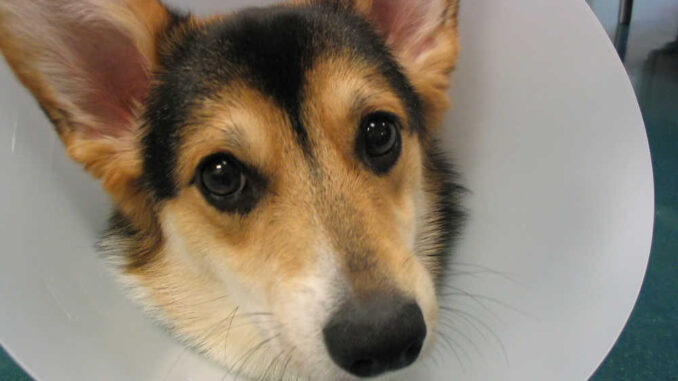
This article was updated on March 14th, 2024

Infections of spay incisions are uncommon after clean surgical procedures but still occur occasionally, mostly if a dog contaminates their incision after surgery. In this article, we will review:
- pictures of healthy spay incisions and
- pictures of spay incisions that have become infected.
Finally, we will also share tips to make sure your dog’s incisions heal properly.
Picture of a spay incision immediately after the surgery
A spay surgery, also called an ovariohysterectomy, involves removing the ovaries, fallopian tubes, and uterus from a female dog. The skin itself will be closed with either skin glue, staples, or stitches, depending on your vet’s preference and what works best for your dog.
Pictured below is an incision immediately after surgery:
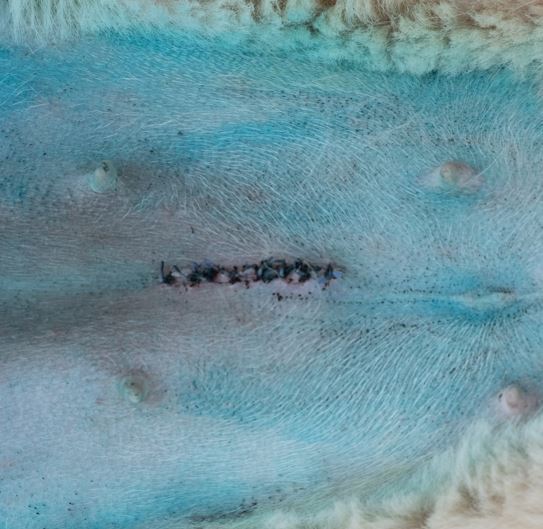
Immediately after the surgery, your dog will be lethargic from the anesthesia, and you’ll notice their behavior is more solemn than normal. It will take a few days (typically 2-3) before your dog’s demeanor returns to normal.
Your dog should be back to normal within 10-14 days
Even when they seemingly return to normal, the healing process isn’t over. Your dog will need to be kept calm and avoid extensive exercise until they’re fully healed. The stitches under your dog’s skin will dissolve, and they should be back to normal in 10-14 days.
What a normal spay incision looks like in dogs [with pictures]
Before we delve into what unhealthy spay incisions look like in dogs, let’s explore what a normal spay incision should look like.
After surgery, the spay incision site will likely be red or pink around the edges, and there may be some slight swelling that will go down as your dog heals:
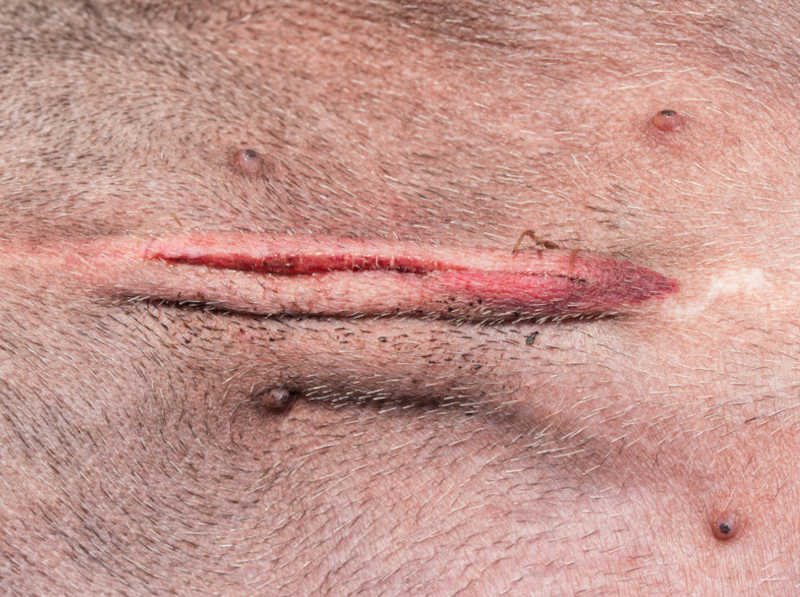
The suture material under the skin will absorb but skin sutures often need to be removed after the healing period:
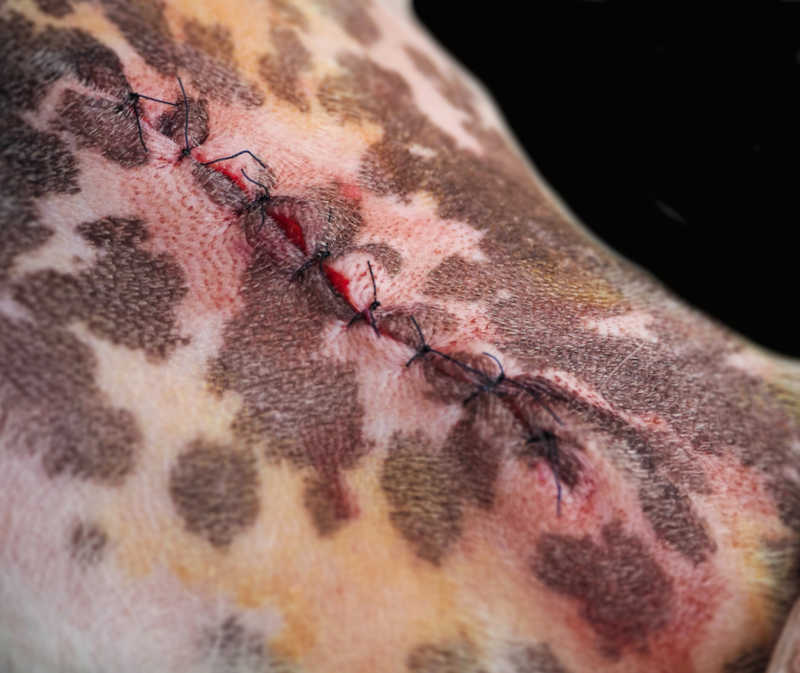
The picture below shows a healing incision. There is a small amount of scabbing present, which is very normal. Minimal bruising is also normal:
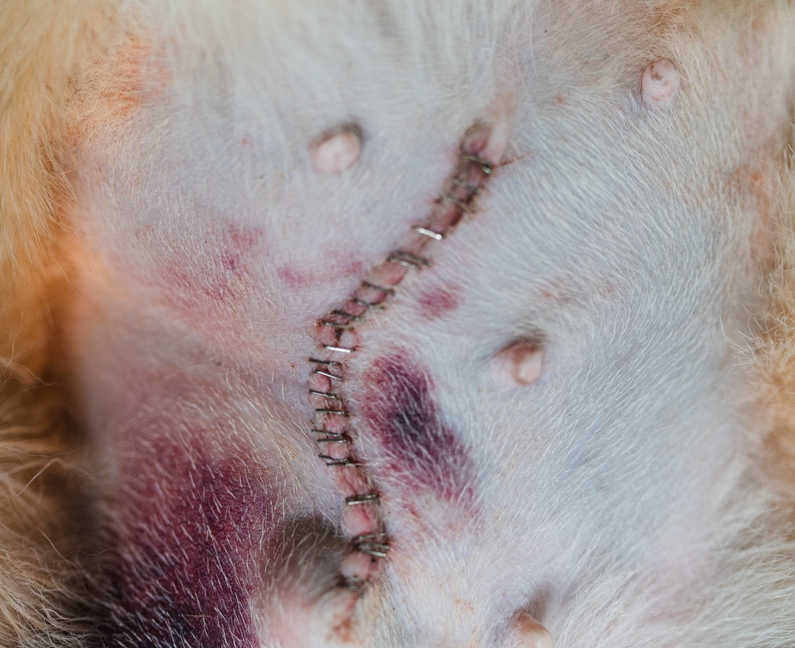
It’s crucial that you monitor your dog’s spay incision site closely throughout their healing process. Check the site regularly and supervise your pet at all times to prevent them from licking or chewing at the incision.
While an Elizabethan collar can help prevent infections, it’s not fool-proof and monitoring is still critical to your dog’s healing.
You’ll know that your dog’s spay incision is fully healed when the redness has gone away and scar tissue has formed. There should be no sign of discharge. The incision location should be painless to touch.
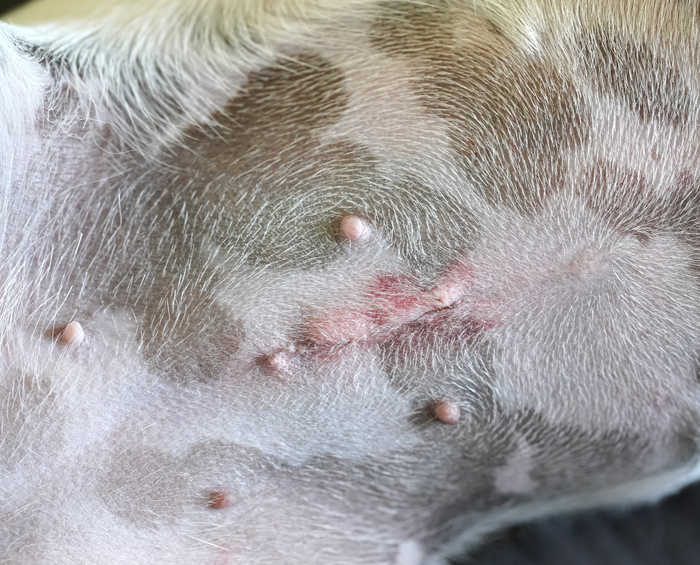
What a spay incision infection looks like in dogs [with pictures]
Spay incision infections can occur for a variety of reasons. They are most often caused by dogs licking or chewing at the surgical site. Licking the spay incision not only irritates the skin around the surgical site, but it also introduces oral bacteria to the wound.
In the picture below, you can see the difference between inflamed skin and normal healing areas. The red, angry skin has been irritated by licking and the sutures were also chewed out.
When a dog removes their sutures, this puts the dog at risk for dehiscence or breakdown of the surgical site.
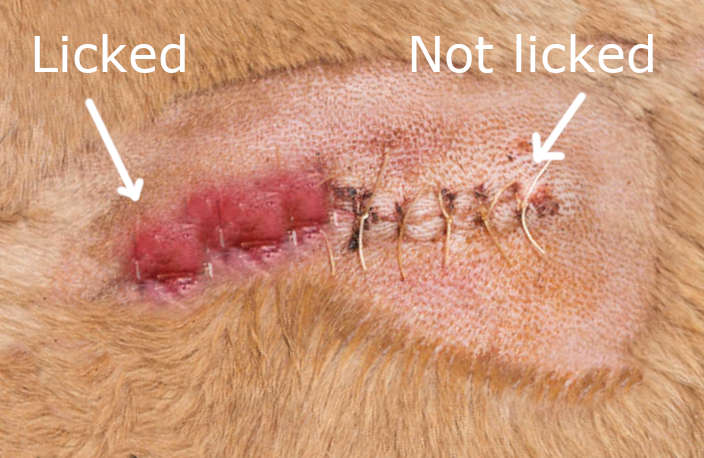
This dog’s abdominal incision in the picture below is very inflamed. It has been closed with staples that are becoming embedded due to the swelling of the skin:
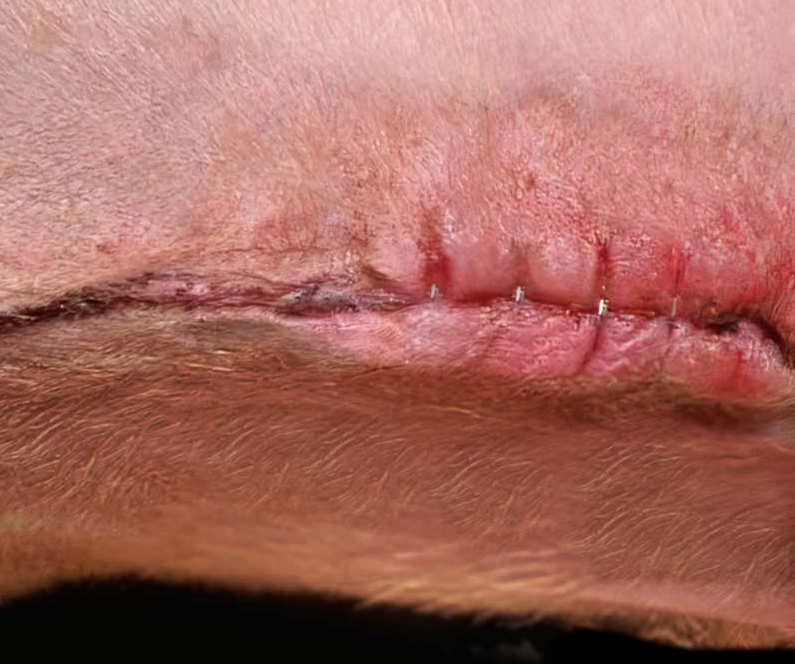
Pictured below is an incision that has clearly become infected. There is tan to green discharge and swelling around the middle of the incision.:
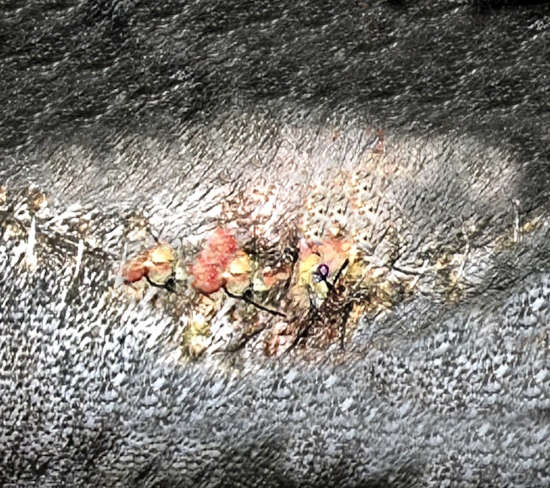
This is a picture of a spay incision site that has become infected. It is very inflamed and has discharge:
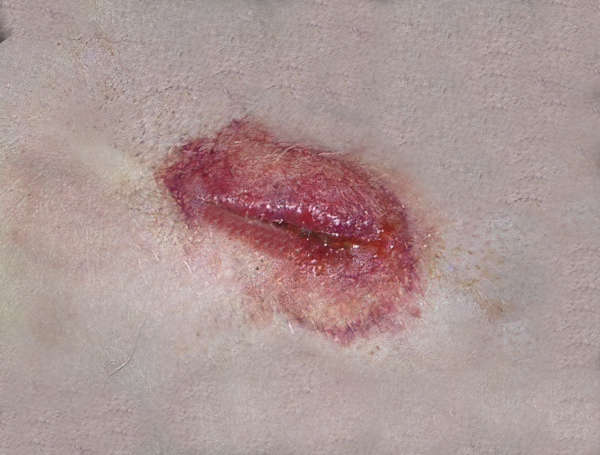
Steps you can take at home to help avoid infections
1. Follow your veterinarian’s post-operative instructions. Your veterinarian will provide specific instructions for your dog’s post-operative care following their spay surgery. While these instructions may seem exhaustive, it’s crucial that you follow them exactly to help your dog heal as quickly and as painlessly as possible. Not complying with aftercare instructions is a leading cause of spay incisional infections.
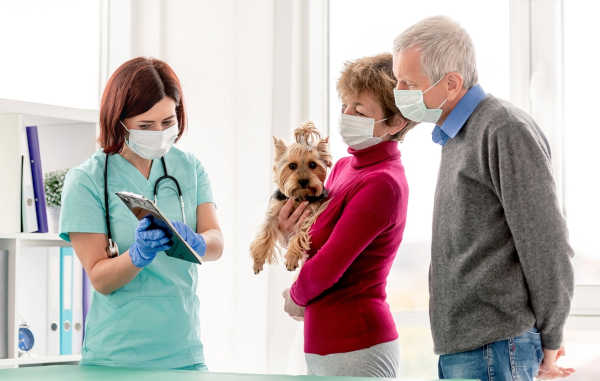
2. Keep an e-collar or cone on your dog at all times. Dogs MUST wear their e-collars or cones to prevent them from licking and chewing the incision. The spay incision site will likely become itchy as it starts to heal, and it’s natural for your dog to want to lick or chew at the area. The only way to prevent your dog from spreading their mouth bacteria into the surgical wound is to keep the cone or e-collar on your dog at all times, and to supervise them closely.
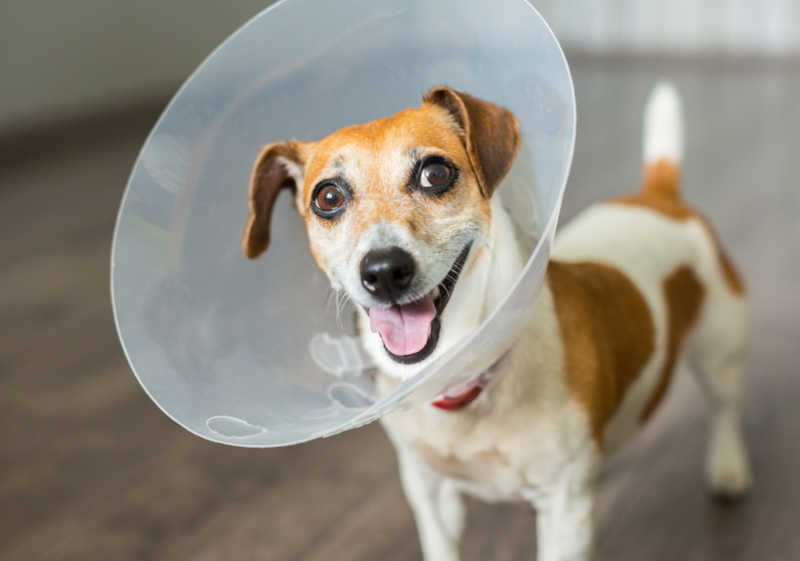
3. Avoid excessive activity: Your dog should be kept strictly rested for a minimum of 2 weeks or longer (if directed by your veterinarian) to allow the tissue to heal appropriately. That means intensive movements like running and jumping are strictly off-limits. Too much motion or exertion can cause the wound to re-open, or make healing more difficult. Poorly healing wounds are at a greater risk of infection.
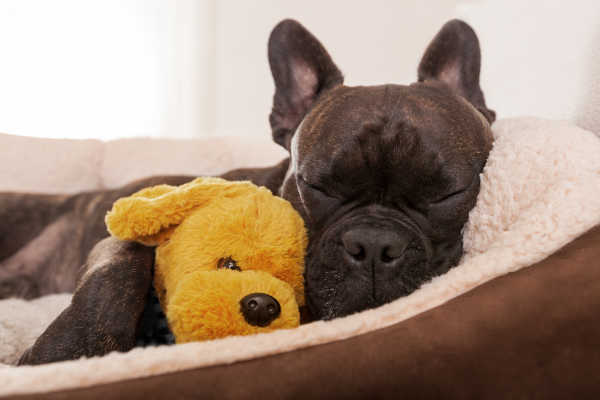
4. Do not allow your dog to lick or chew its wound: Your dog’s mouth contains a variety of bacteria, all of which are detrimental to your dog’s open wound. When your dog licks their incision, the bacteria can colonize and cause an infection. Licking also causes trauma to the skin and can delay healing. I have also seen dogs chew through their sutures and open their incisions, requiring emergency surgery to repair the defect.
5. Keep the area clean and dry: Your dog’s spay incision should not get wet for 14 days following surgery. You should restrict bathing, unless otherwise stated by your veterinarian, as well as restrict swimming. Moisture in the incision will delay the healing process. Spay incisions should also be covered if your dog goes outside in the rain or snow.
6. Do not touch the spay incision: Touching the incision with your fingers can also introduce bacteria, so try to limit contact as much as possible. There is no need to clean the incision or apply ointment. Most incisions will heal without any topical treatment.
What causes spay incision infections?
The most common cause of infection is self-trauma of the spay incision by licking and chewing. Beyond that, there are a variety of pre-existing medical reasons that your dog may be more susceptible to an infection, as well as other potential causes:
Existing skin disease: Dogs that have an existing skin infection or chronic skin disease have unhealthy skin that is more likely to become infected or for infection to spread to a new surgical site.
Poor aseptic technique: Dogs that have surgery performed in an unsterile environment can be more prone to infections.
Immunocompromised animals: Animals with chronic diseases that impair their immune system are more likely to develop infections.
Chronic antibiotic use: Animals that are on long-term antibiotics or multiple types of antibiotics are at risk for developing multi-drug resistant bacteria. These can cause serious infections.
Chronic corticosteroid use: Animals that are on corticosteroids long-term may have delayed wound healing and be more at risk for wound healing failure and infection.
Overexertion: Dogs that have performed intense physical exercise before their wound has fully healed may cause irritation to the spay incision site, leading to infection.
The picture below is a picture of a dog with skin disease. Skin disease should always be treated first before elective surgery is performed, as these dogs are at increased risk of incisional infections.
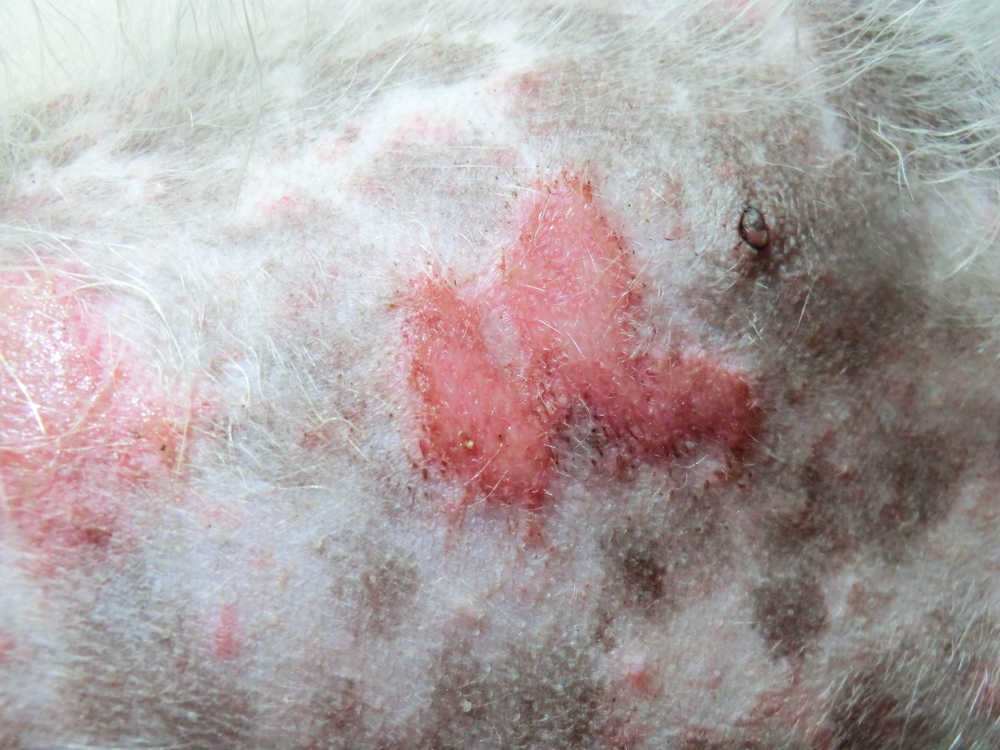
When to call your veterinarian
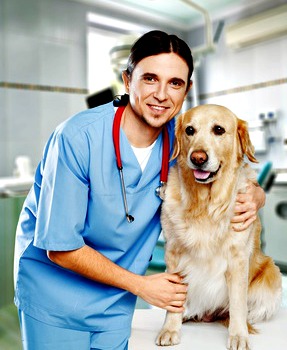
If at any point you suspect your dog’s incision is abnormal or infected, you should contact your veterinarian right away. Photos are extremely helpful, and your veterinarian may request you email pictures to their clinic for review. It is always best to be overly cautious because incisional infections can become disastrous if left unattended.
If after hours or on the weekend, it is usually best to follow up with the local emergency clinic for veterinary care.
What do veterinarians do when a spay incision is infected?
Depending on the severity of your dog’s infection, the treatment that your veterinarian recommends will differ. Before they can determine what treatment plan to take, your veterinarian will perform a thorough examination of your dog and their surgical site to determine if the incision is infected and if your dog is feeling well. Fever may be an indicator of systemic illness secondary to infection (Read our article: How to Tell if Your Dog has Fever).
They will examine the incision closely and may consider collecting a culture of the site. A culture is a swab taken from the incision that is sent to a laboratory to assess for bacterial growth that can indicate an infection is brewing.
Once bacteria are grown, susceptibility testing should be performed to determine what antibiotic the bacteria can be treated with. Due to the risk of resistant infections in surgical wounds, culture and susceptibility testing should always be performed.
After examination, your veterinarian will discuss antimicrobial treatment with antibiotics. They may start a broad-spectrum medication until culture results return.
Severe infections may need to be surgically addressed and cleaned. Some incisions will need to be re-opened and left to heal by the formation of granulation tissue. This method is called healing by second intention. Some animals will need drains placed or debridement of necrotic tissue.
The cost associated with these treatments is variable. A sensitivity and culture usually costs around $200-300. Depending on the antimicrobial selection, these are generally inexpensive, but large dogs or those requiring prolonged therapy may need hundreds of dollars of medication.
If revision surgery is needed, the cost may range from several hundred to several thousand dollars. Therefore it is important to follow post-operative instructions as closely as possible. Some infections are inevitable, but most are caused by inappropriate surgery aftercare.
Frequently asked questions
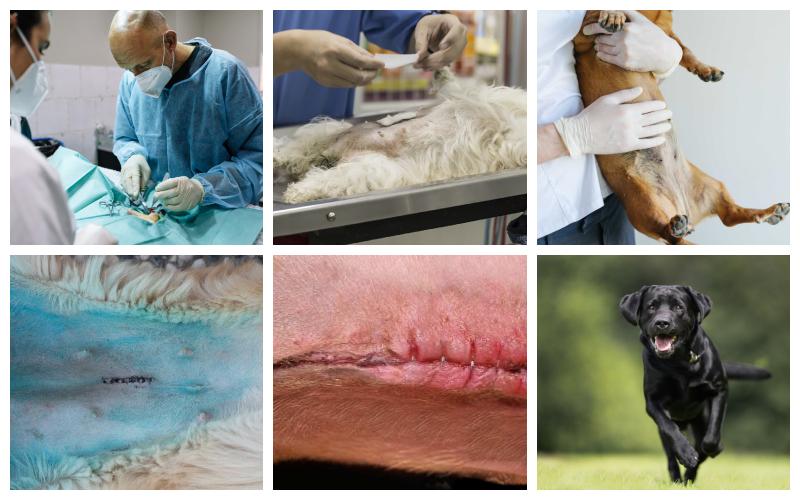
How do infections of spay incisions happen?
Almost all infections at the spay incision site are self-inflicted in dogs. Because dogs don’t understand that they should not lick their incision sites, they are likely to chew and irritate the wound. When your dog licks or chews at their incision, it introduces oral bacteria into the wound, leading to infections.
If unable to lick or chew, they may rub it on the floor instead. This can lead to the incision failing to heal and secondary infection.
Other potential infections can happen if your dog over-exerts themselves before their spay incision has had time to heal. Exercise should be kept to a minimum to avoid reopening or irritating the surgery site.
What happens to a dog’s skin after the incision?
After surgery, the skin around your dog’s spay incision should heal in a normal wound-healing fashion, and return to normal within 2 weeks. The stages of wound healing are described here.
What is the typical post-operative care for a dog?
Typical post-operative care includes strict rest, wearing an e-collar, and close incision monitoring for a minimum of 10-14 days. Dogs may not return to normal activity until the incision is healed and sutures are removed if applicable.
How should I prepare my dog for surgery?
Talk to your veterinarian for specific instructions. They will ask you to withhold food and water the morning of the spay surgery to help prevent vomiting.
What should I prepare for after my dog’s spay surgery?
Preparing your home for your dog’s arrival after surgery is a good idea to keep them as comfortable and safe as possible. Make sure there is a quiet room set up with a crate and clean, dry bedding. This space should be easily accessible by your dog and an easy space for you to restrict your dog’s activity level.
How long does it take for a spay incision to heal on a dog?
Average incision healing is 10-14 days. Infected incisions will take a prolonged time to heal as bacterial contamination will prevent normal healing. Many incisions can take several weeks to heal.
How often should I be checking a dog’s incision after surgery?
Owners should evaluate their pet’s incisions at least twice a day to ensure they are healing appropriately.
How common are spay incision infections?
While infections can occur and dogs are often unpredictable, spay incision infections are not common. With proper monitoring of your dog’s behavior and following all instructions from your vet, your dog’s incision should heal quickly.
How does a spay surgery work?
During the surgery, your dog will be fully asleep under general anesthesia. Your veterinarian will make an incision just below your dog’s belly button. Through this incision, your dog’s reproductive tract will be removed, and then your vet will close the incision with two layers of stitches under the skin. A third layer will be used to close the skin, and this layer is the stitches you can see.
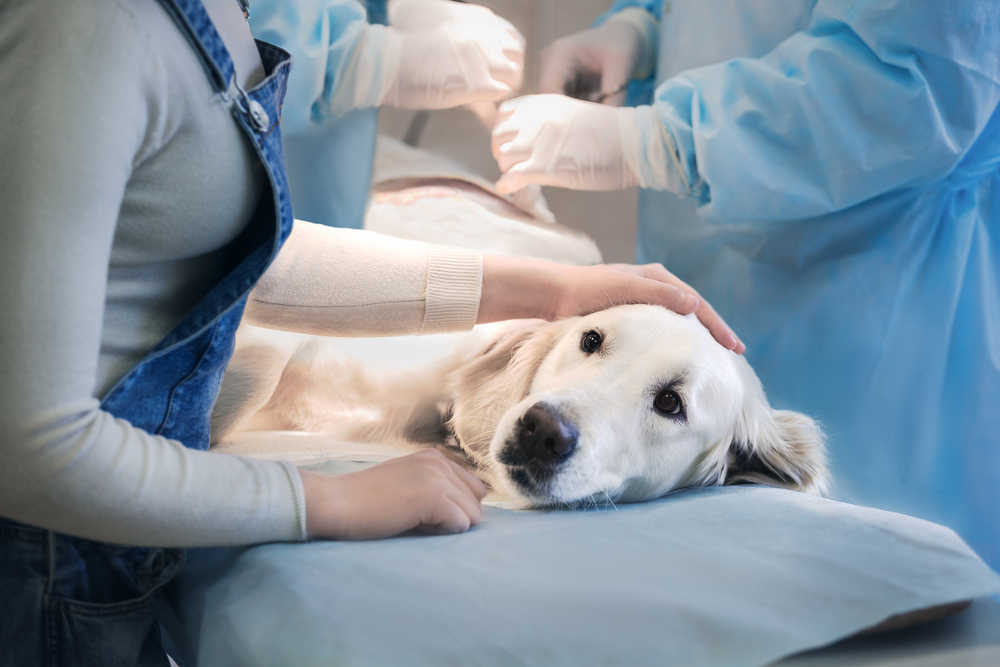
Related posts about incisions:
Related posts about spaying:
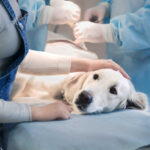 Incision Lumps and Suture Reaction in Dogs (After Surgeries) - Your dog has just had surgery, and you are anxiously watching them for any sign of complication. You want their… [...]
Incision Lumps and Suture Reaction in Dogs (After Surgeries) - Your dog has just had surgery, and you are anxiously watching them for any sign of complication. You want their… [...]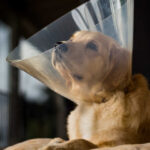 Timeline for Dog Spay Recovery [By A Spay Surgeon] - Dog spays are an extremely common and effective surgery. Veterinarians have been performing dog spays since the 1970s on a… [...]
Timeline for Dog Spay Recovery [By A Spay Surgeon] - Dog spays are an extremely common and effective surgery. Veterinarians have been performing dog spays since the 1970s on a… [...]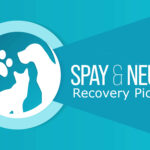 Pictures of Normal Dog Surgery Incisions and Scars (Incl. Spay and Neuter Surgeries) - Spay and neuter surgeries are some of the most common surgeries performed by veterinarians. However, even though your veterinarian likely… [...]
Pictures of Normal Dog Surgery Incisions and Scars (Incl. Spay and Neuter Surgeries) - Spay and neuter surgeries are some of the most common surgeries performed by veterinarians. However, even though your veterinarian likely… [...]Disclaimer: This website's content is not a substitute for veterinary care. Always consult with your veterinarian for healthcare decisions. Read More.

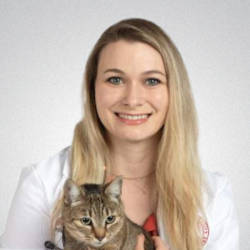
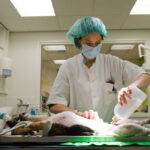
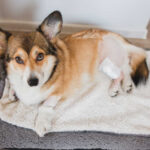
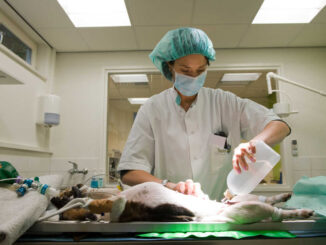
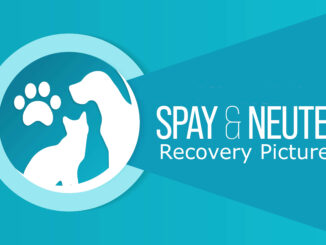
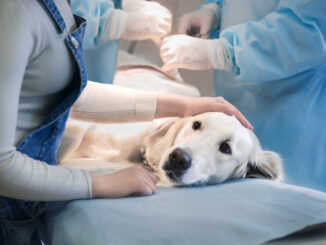
Be the first to comment